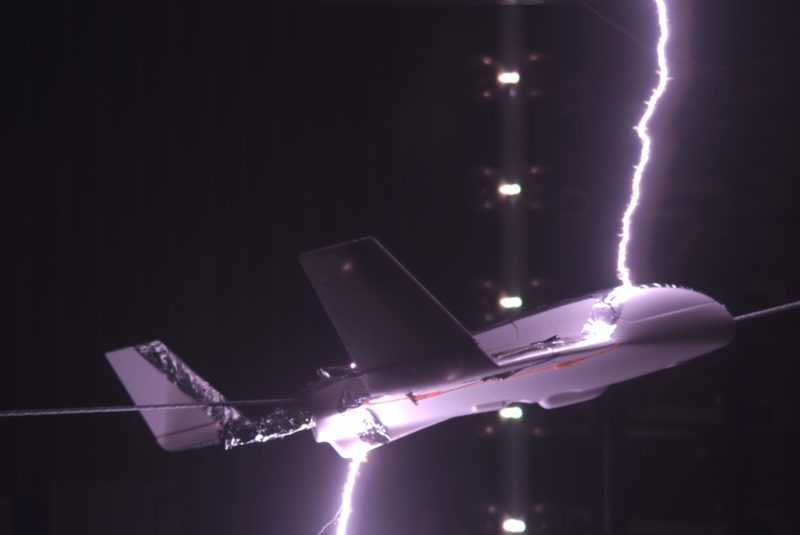31 January 2020
Small electrical charges could help airplanes avoid lightning strikes
Posted by larryohanlon
By Larry O’Hanlon
There may be a way to make airplanes less prone to lightning strikes, according to new research exploring the role of the aircraft in the electrical events. The trick, surprisingly, might be to give airplanes a bit of an electrical charge when they are in the air, say scientists reporting their experimental work in AGU’s Journal of Geophysical Research: Atmospheres.
The average commercial aircraft gets struck once or twice per year by lightning. Every time a plane is struck, it is taken out of service for inspections and repairs. This causes flight delays and cancellations. Finding a way to reduce lightning strikes could save time and money.
To that end, a team of researchers at the Massachusetts Institute of Technology (MIT) and the Technical University of Catalonia (UPC) built an apparatus around a model plane to learn how airplanes interact electrically with the charged sky around them. This includes examining the counter-intuitive way bolts of lightning begin at the edges of the aircraft and move out into the sky.

Side view of the 1-meter wingspan model plane used in the experiments with both positive and negative lightning. Credit: Carmen Guerra-Garcia
“Planes don’t fly into lightning. They actually trigger lightning,” said Carmen Guerra-Garcia, an assistant professor at MIT involved in the study. The planes create what are called positive and negative leaders, which are the fast-moving ionized channels that develop into lightning bolts. “Lightning would not have happened if the aircraft wasn’t there,” she said.
In the apparatus, the researchers simulated an electric field between the clouds and the ground then changed the charge of the model airplane. For this they used a static electricity generator — like those that make your hair to rise at a science museum — attached to the model airplane. This allowed them to see how the charge on the airplane modified the thresholds to trigger lightning.
Actual commercial aircraft are designed to constantly bleed away any static charge that builds up while they are in the air, said Colin Pavan, a graduate student at MIT and lead author of the new study. This is because static electricity can interfere with and damage electronics. As a result, commercial aircraft are close to electrically neutral as they fly through the air.

A schematic of the apparatus used to test aircraft charging and lightning strikes. Note the Van de Graaf (VDG) generator used to charge the model plane. Credit: Pavan, et al., 2020, JGR Atmospheres
Neutral would seem to be a good way to fly, when in the vicinity of charged masses of air in storm clouds. However, that’s not what the MIT/UPC team found. Instead, they discovered that their model plane was more prone to lightning strikes when it was neutral.
“In terms of lightning avoidance, these experiments suggest that you can fly safely through ambient fields that are 30% higher if the aircraft has some charge,” said Guerra-Garcia.
Just how that might translate into aircraft operations and design is not yet known. For now, the MIT team is hoping to explore the details of how lightning leaders are created and propagate from aircraft and into the sky.
“We also are looking into methods of charging of aircraft,” said Guerra-Garcia. “Can you do it and control it?”
She stresses that like a lot of questions involving lightning, there is still a lot to learn, because lightning is notoriously hard to study.
“It’s surprising” said Guerra-Garcia. “It’s a really old problem but there are a lot of unknowns.”
Larry O’Hanlon is a freelance science writer and editor. He manages the AGU Blogosphere.



 GeoSpace is a blog on Earth and space science, managed by AGU’s Public Information staff. The blog features posts by AGU writers and guest contributors on all sorts of relevant science topics, but with a focus on new research and geo and space sciences-related stories that are currently in the news.
GeoSpace is a blog on Earth and space science, managed by AGU’s Public Information staff. The blog features posts by AGU writers and guest contributors on all sorts of relevant science topics, but with a focus on new research and geo and space sciences-related stories that are currently in the news.